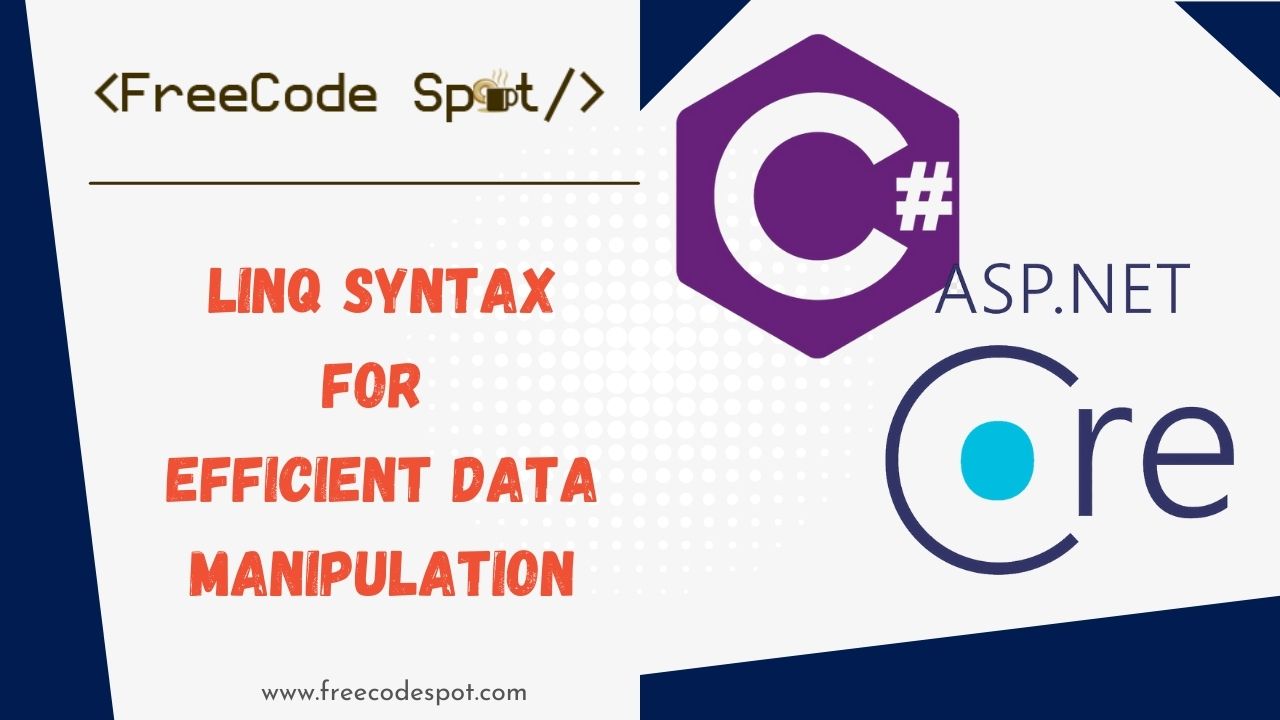Language-Integrated Query (LINQ) is a powerful feature in C# that allows developers to query and manipulate data using a SQL-like syntax within their .NET applications. LINQ can simplify data manipulation, enhance code readability, and improve developer productivity. However, to make the most of LINQ and avoid common pitfalls, it’s essential to follow best practices. In this article, we will explore some of the best practices for LINQ programming.
I. Understand Deferred Execution
One of the fundamental concepts of LINQ is deferred execution. This means that a LINQ query doesn’t execute immediately when defined but rather waits until you request the data. Understanding this behavior is crucial to avoid unexpected performance issues and database hits. To ensure proper execution, use the ToList(), ToArray(), or similar methods to force immediate execution when needed.
var query = dbContext.Customers.Where(c => c.IsActive);
var customers = query.ToList(); // Executes the query and retrieves data.II. Use Strongly Typed Queries
Whenever possible, use strongly typed queries, which can be verified at compile time. Instead of using string-based queries, employ methods provided by LINQ, lambda expressions, or LINQ query comprehension syntax. Strongly typed queries enhance code readability and maintainability and reduce the likelihood of runtime errors.
// Strongly typed query using lambda expressions
var activeCustomers = dbContext.Customers.Where(c => c.IsActive);
// Strongly typed query using LINQ query comprehension syntax
var activeCustomers = from c in dbContext.Customers where c.IsActive select c;III. Optimize Database Queries
LINQ can generate complex SQL queries, and it’s essential to optimize these queries for performance. Utilize methods like Select, Where, and OrderBy in a way that minimizes the data transferred from the database and efficiently uses indexes. Be cautious of N+1 query problems, which can occur when fetching related data, and consider using methods like Include or Load to load related entities eagerly.
// Optimize query using Select to fetch specific columns
var customerNames = dbContext.Customers.Where(c => c.IsActive).Select(c => c.Name);
// Eager loading using Include to avoid N+1 query problem
var orders = dbContext.Orders.Include(o => o.Customer);IV. Avoid Using LINQ in Performance-Critical Loops
Using LINQ inside performance-critical loops can lead to significant performance bottlenecks. LINQ expressions are typically not as efficient as manual iterations or traditional loops. Consider using LINQ for querying and filtering data, but when performance is essential, use for or foreach loops to process data.
// Using LINQ in non-performance-critical scenarios
var activeCustomers = dbContext.Customers.Where(c => c.IsActive).ToList();
// Using manual iteration in performance-critical scenarios
foreach (var customer in activeCustomers)
{
// Process customer data
}
V. Handle Null Values
LINQ queries can return null values, especially when dealing with outer joins or operations on potentially missing data. Always check for null values when working with LINQ results to prevent null reference exceptions. You can use null conditional operators (?.) to simplify null checks.
var customer = dbContext.Customers.SingleOrDefault(c => c.Id == customerId);
if (customer != null)
{
// Process customer data
}VI. Be Mindful of Object Materialization
When using LINQ to Entities with an Object-Relational Mapping (ORM) like Entity Framework, be aware of object materialization. It’s important to understand how and when objects are retrieved from the database. Consider projecting only the necessary data into DTOs (Data Transfer Objects) or anonymous types to reduce overhead and improve query performance.
// Materializing an anonymous type with only the required data
var customerData = dbContext.Customers.Where(c => c.IsActive)
.Select(c => new { c.Id, c.Name })
.ToList();Conclusion
LINQ is a powerful tool for data manipulation and querying in C# applications. By following these best practices, you can ensure that your LINQ code is both efficient and maintainable. Remember to understand deferred execution, use strongly typed queries, optimize database queries, be mindful of performance, handle null values gracefully, and consider object materialization. Following these guidelines will help you harness the full potential of LINQ in your development projects.
For more LINQ syntax more..
KEEP CODING!!
